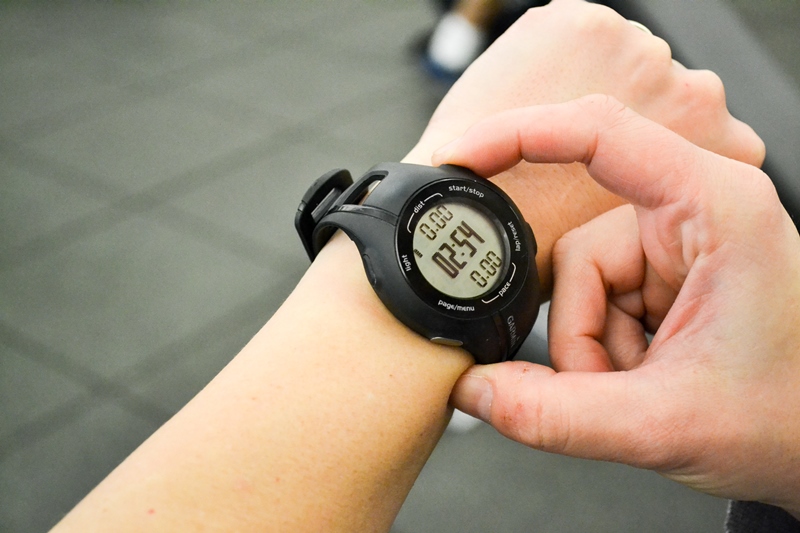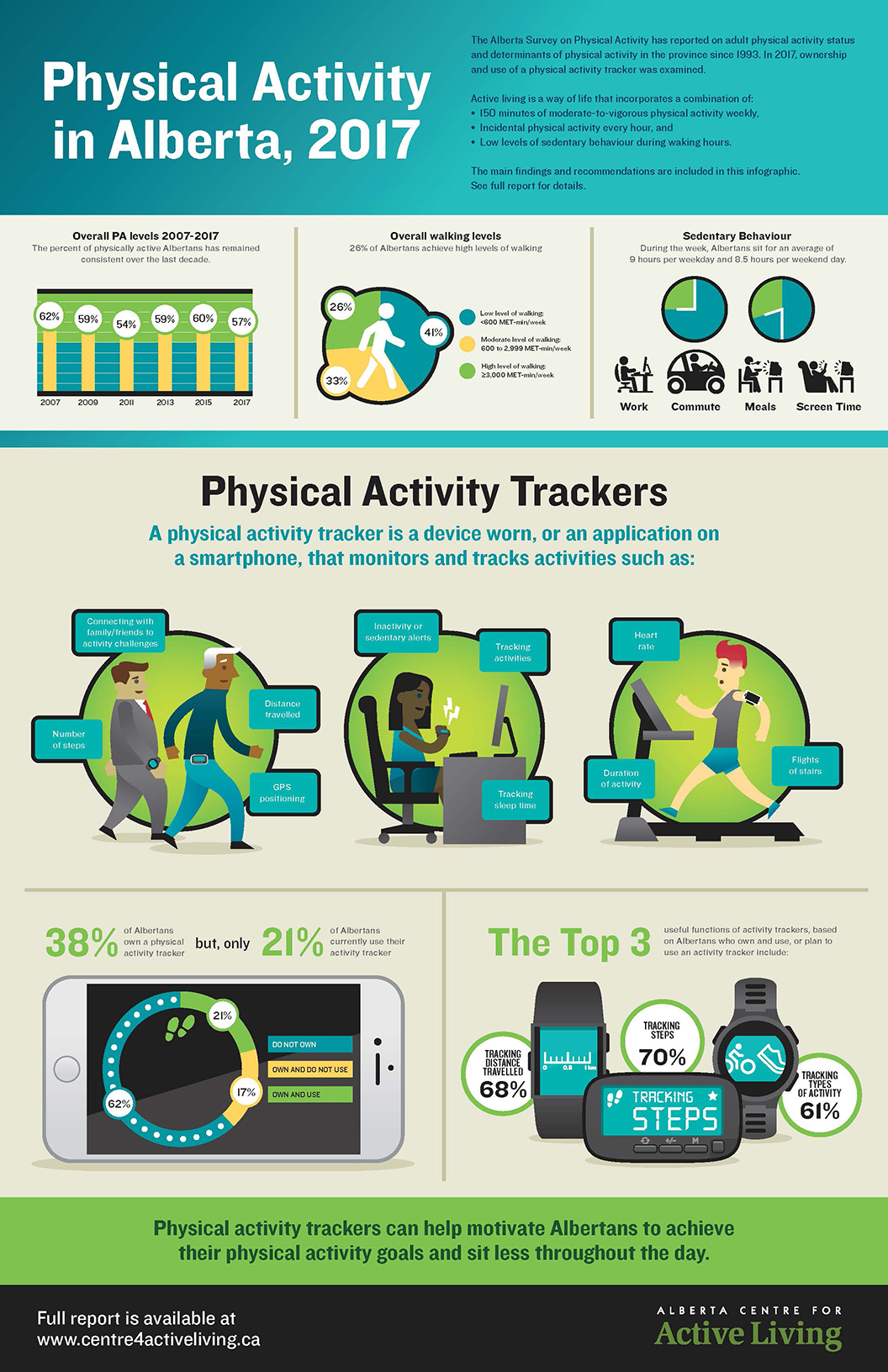
Results of the 2017 Alberta Survey on Physical Activity show that 38% of Albertans own a physical activity tracker
Fitbits, phone apps and Apple and Garmin watches are current tools for many Albertans looking to track their fitness goals. But are these devices as popular as you think?
For the first time, the 2017 Alberta Survey on Physical Activity reported on ownership and use of a consumer-based physical activity tracker. Results have shown that 38% of Albertans own a physical activity tracker.
"Physical activity trackers have gained popularity and can motivate individuals to be more active and less sedentary throughout the day," says Nora Johnston, Director of the Alberta Centre for Active Living.
"More work is needed to support Albertans to be more physically active and less sedentary in our workplace, home and in the community," says Johnston. "Physical activity trackers may act as a tool to complement current physical activity and sedentary behaviour strategies, which in turn make Albertans healthier and improves quality of life."
While physical activity trackers are helping to motivate some people, the 2017 Alberta Survey on Physical Activity published by the Alberta Centre for Active Living indicates that Albertans still need to move more and sit less.
"Only 57% of Albertans are getting enough physical activity to achieve health benefits and one-third of Albertans sit for 10 hours or more a day," says Dr. Soultana Macridis, a co-author of the report and the Research Associate & Knowledge Translation Specialist at the Alberta Centre for Active Living.
"Although 38% of Albertans own a physical activity tracker, only 21% continue to use their device. Understanding factors related to their use may support development and implementation of physical inactivity and sedentary behaviour interventions using these devices to support Albertans in being physically active and less sedentary."
Leading an inactive and sedentary lifestyle can increase the risk of developing chronic physical and mental health conditions such as cardiovascular disease, stroke, hypertension, colon cancers, breast cancer, Type 2 diabetes, depression, and anxiety.
A physical activity tracker can be as simple as a device worn, such as a Fitbit, or an application on a phone. Depending on the device, Albertans can use their physical activity tracker to increase their physical activity and reduce sedentary time in a variety of ways, such as:
• tracking types of activities, such as walking, cycling and swimming
• tracking number of steps
• tracking distance travelled
• tracking sedentary time and providing inactivity or sedentary alerts
• connecting with family and friends for activity challenges

The Alberta Survey on Physical Activity is a biennial Alberta Survey on Physical Activity, conducted by the Centre since 1993, monitors and reports on the physical activity levels of adult Albertans.